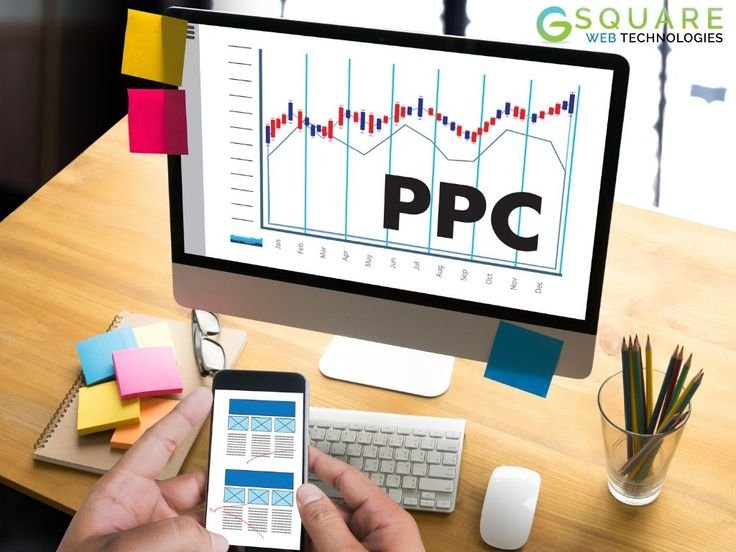In today’s digital-first world, businesses are constantly pressured to do more with less. The key to standing out lies in a strong brand presence and in mastering the art of driving results with precision. One of the most powerful tools in the marketer’s arsenal is Pay-Per-Click (PPC) advertising. It’s a strategy that goes beyond simple visibility, focusing instead on creating meaningful interactions that convert potential customers into loyal clients.
However, running ads and hoping for the best is not enough. The real strength of pay-per-click marketing in New Jersey lies in the optimization—transforming clicks into conversions. Whether you’re new to PPC or looking to refine your existing campaigns, applying the proper techniques can dramatically boost your ROI.
Let’s explore how to maximize conversions with proven PPC marketing strategies.
Understanding Your Target Audience
The foundation of any successful PPC campaign is an intimate understanding of your target audience. Knowing who your ideal customers are, what they need, and where they spend their time online is crucial to creating campaigns that resonate.
Begin by segmenting your audience based on demographics, interests, and behaviors. Are you targeting local customers, or do you have a broader national audience? Understanding their pain points, desires, and search intent allows you to craft more relevant ad copy, select the right keywords, and choose the optimal landing pages to drive conversions. The more tailored your campaign is, the more likely it is to convert.
Optimizing Ad Copy for Click-Through and Conversion
Your ad copy is the first impression you make on a potential customer, so it must speak directly to their needs. Crafting compelling, clear, and action-oriented ad copy can make all the difference in driving clicks and conversions. Focus on the following:
- Relevance: Ensure that your ad aligns with the keywords you’re targeting. The ad should promise to solve the problem or fulfill the need indicated by the search term.
- Clear Call to Action: Whether “Get a Free Quote” or “Shop Now,” your call to action should be prominent and compelling. Be specific about the value you’re offering to entice the user to take the next step.
- Urgency: Phrases like “Limited Time Offer” or “Only 5 Left!” can prompt quicker decisions, reducing the likelihood that a potential customer will postpone action
Choosing the Right Keywords
Keywords are the backbone of any PPC campaign, so choosing the right ones is essential. But it’s not just about selecting the most popular terms—it’s about focusing on high-intent keywords that indicate a user is ready to take action.
For example, someone searching for “best pizza in town” may be looking for information, while someone searching “buy pizza near me” is likely closer to making a purchase.
Long-tail keywords—those more specific phrases often with three or more words—tend to have lower competition and can bring in more qualified leads. Targeting these can improve both your click-through rate (CTR) and conversion rate. Regularly reviewing and refining your keyword list helps ensure your ads remain relevant and practical.
Landing Page Optimization
Your ad may bring a user to your site, but the landing page ultimately drives conversions. Optimizing your landing pages is critical to ensuring that the traffic you generate through PPC campaigns converts into leads or sales. Here are a few best practices:
- Consistency: Ensure that the messaging and offer in the ad match what users see on the landing page. This creates a seamless experience that builds trust and encourages action.
- Clear Value Proposition: Your landing page should immediately communicate what makes your offer valuable. Whether it’s a discount, free trial, or exclusive content, ensure the value is clear and prominent.
- Simple and Focused Design: Keep the layout simple with a singular focus. Too many options or distractions can overwhelm the visitor and reduce the chances of conversion. Keep forms short and ask only for the most necessary information.
- Fast Load Times: A slow-loading page can drive potential customers away before they can engage. Ensure your landing page loads quickly to keep visitors from bouncing.
Using Retargeting Strategies
Users may not immediately convert even if they click on your ad. This is where retargeting comes into play. By tracking visitors who have interacted with your site but didn’t convert, you can re-engage them with highly targeted ads encouraging them to return and complete the desired action.
Retargeting helps keep your brand top-of-mind and allows you to nurture potential customers through the conversion funnel. It’s an important tool for ensuring your marketing efforts aren’t wasted.
Continuous Monitoring and Adjustments
One of the most significant advantages of PPC advertising is its measurability. Analytics tools offer valuable insights into how your campaigns are performing. Regularly monitor key performance indicators (KPIs) like CTR, conversion rate, and cost-per-conversion.
Look for trends and make adjustments where necessary. If a particular keyword isn’t converting, pause it and allocate the budget to better-performing keywords. Similarly, analyze which ads, landing pages, or calls to action get the most engagement and refine your strategy based on this data.
Conclusion
Maximizing conversions with PPC management in New Jersey requires a strategic approach and attention to detail. Each element plays a vital role in driving results, from understanding your audience and optimizing ad copy to refining landing pages and leveraging retargeting.
By applying these proven techniques, you can increase your click-through rates and turn those clicks into lasting business growth. With consistent effort, testing, and optimization, PPC can become an invaluable tool for achieving your marketing objectives.


